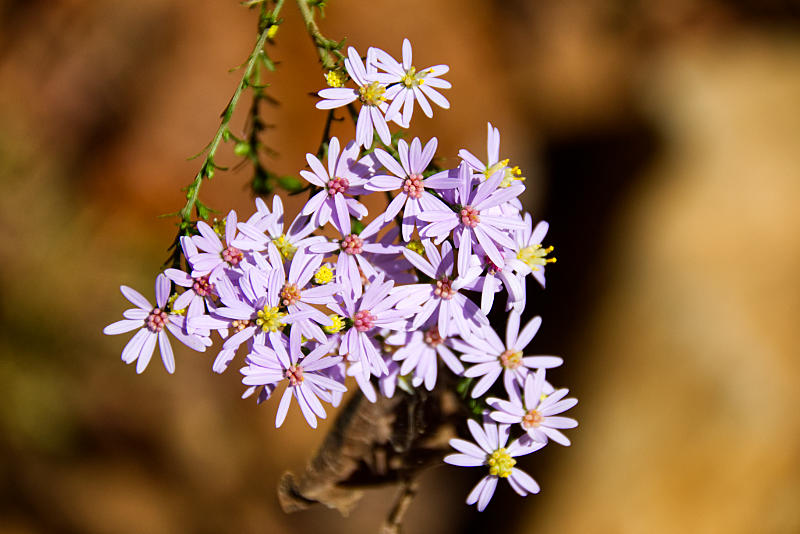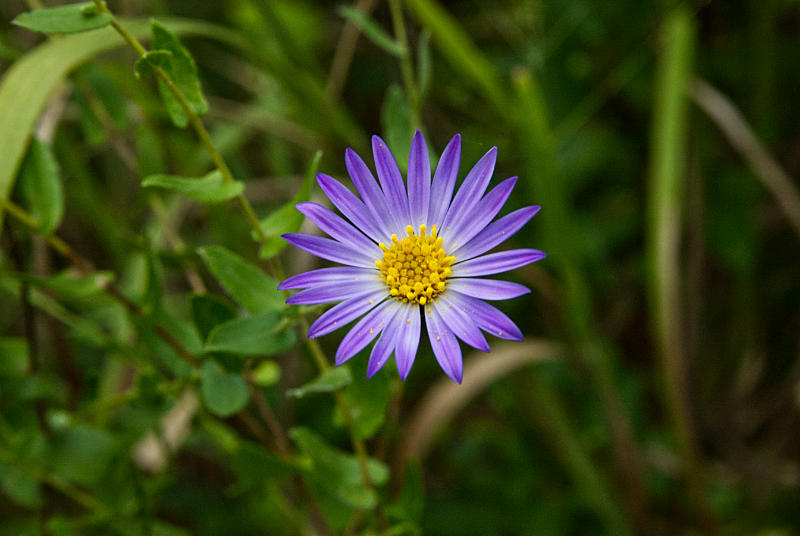
If you’re looking to add some beauty and color to your garden, look no further than the charming aster flowers. These perennials come in a wide range of colors and sizes, making them a versatile addition to any landscape. But aster flowers are more than just a pretty face – they also have a rich history and a variety of cultural meanings. In this article, we’ll explore everything you need to know about aster flowers, from their origins to their medicinal properties. So, if you’re ready to learn more about these lovely blooms, keep reading!
What are Asters?
The aster is a colorful perennial flower that can grow up to 2 meters tall. The genus of Aster contains over 600 different species. The flowers are an important source of nectar for many pollinators such as bees and butterflies. They come in a dazzling array of colors. They may be purple, blue, red, or even rarely pink.
The flowers of aster plants are star-like in appearance. The name aster is derived from the Greek word for star because the flowers remind one of a star.
You may find them in sunny areas such as pastures, roadsides, and open prairies. They do prefer moist soils so you are more likely to encounter them around places that stay moist, even in drier times.

Wild Aster is Edible
The leaves and flowers are both edible and can be used in a number of ways in the kitchen, as well as for survival. They can be used fresh in dishes like salads, they can be added to cooked dishes as a green, and they can also be dried for later use.
The most common edible use for asters is as a garnish or decoration. The bright and colorful flowers of asters can be added to salads, soups, and other dishes to add a pop of color and a subtle flavor. The petals of the flowers are edible and can be eaten raw or cooked.
In addition to being used as a garnish, some species of asters can also be used to make tea. The leaves and flowers of the plant can be steeped in hot water to make a refreshing and aromatic tea. The tea has a slightly bitter taste, but it can be sweetened with honey or other natural sweeteners.
It is important to note that not all species of asters are edible, and some can be toxic if consumed in large quantities. Therefore, it is important to properly identify the species of aster before consuming it. It is also important to avoid eating plants that have been sprayed with pesticides or other chemicals.
Aster Medicinal Uses
The roots of aster have been used for centuries in Chinese medicine. The roots are also edible and can be added to soups and stews, in addition to being dried and used for tea. The tea has been used as a home remedy for coughing and wheezing. There are species that have been studied for this and have been shown to decrease inflammation in the lungs in the lab. More studies are needed to determine what the mechanism of action may be.
It has also been shown in studies in the laboratory to possibly help to relieve constipation. Once again, the mechanism of action wasn’t clear.
Native Americans also used this plant in a number of ways to treat ailments. They brewed tea from the roots or leaves and flowers for a host of ailments from fever to lung issues.
Be sure and check out our list of articles to discover a wealth of information on other wild edible and medicinal plants.
FAQs:
Q: What are Asters?
A: Asters are a genus of flowering plants that belong to the Asteraceae family. They are characterized by their star-shaped flowers and are native to many parts of the world.
Q: Do asters come back every year?
A: Yes, asters are typically perennial plants, meaning they will come back year after year.
Q: Where do asters grow best?
A: Asters generally prefer well-draining soil and full sun, although some varieties can tolerate partial shade. They can grow in a variety of soil types and are often found in meadows, prairies, and along roadsides.
Q: Is Aster an annual or perennial?
A: Aster is typically a perennial plant, although some varieties may be grown as annuals in colder climates.
Q: What is the best month to plant aster?
A: The best time to plant aster varies depending on the specific variety and the location. Generally, they are planted in the spring or fall.
Q: What do asters taste like?
A: The taste of aster flowers can vary depending on the species and variety, but they are generally mild and slightly sweet. Some people describe the flavor as similar to chrysanthemum or chamomile.
Q: Are all asters edible?
A: While many species of aster are edible, not all varieties are safe to eat. It is important to correctly identify the plant before consuming any part of it.
Q: Are some asters poisonous?
A: Yes, some species of aster contain toxins and should not be consumed. It is important to correctly identify the plant before consuming any part of it.
Q: Do asters have medicinal properties?
A: Yes, some species of aster have been traditionally used for medicinal purposes. They have been used to treat conditions such as inflammation, respiratory issues, and digestive problems.
Q: Can you make tea from Aster?
A: Yes, aster flowers can be used to make tea. The tea is said to have a calming effect and may be helpful in treating respiratory issues and inflammation.
Q: What is Aster tea?
A: Aster tea is an herbal tea made from the flowers of the aster plant. It is said to have a calming effect and may be helpful in treating respiratory issues and inflammation.